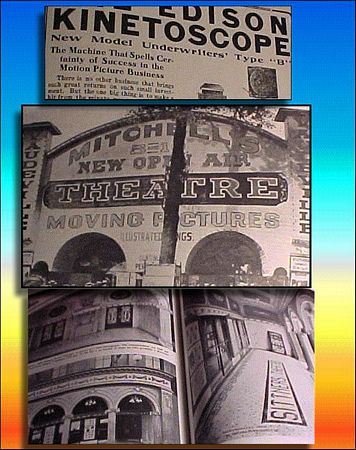Kudos to the Progress and Freedom Foundation for assembling a thought-provoking book of Media Metrics (pdf) that argues “we have more media choice, more media competition, and more media diversity than ever before . . .  (if) . . . there was ever a ‘golden age’ of media in America, we are living in it today.” In a blog summary, authors Adam Thierer and Grant Eskelsen hope that, guided by this impressive compilation of tables and charts, “future debates on this subject will be be guided by facts instead of fanaticism and by evidence instead of emotion . . . hyperbolic rhetoric (and) shameless fear-mongering.”
Which fortunately leaves me free to heap derision and disdain on this bean-counting analysis that reeks of moral relativism like a chain-smoking French deconstructionist whose underarms have never been dishonored by deodorant.
Let me explain this seemingly bipolar view. I truly appreciate that this libertarian think-tank used its financial support from nouveau corporate media to pull together facts on everything from Internet advertising trends to magazine expansion (see niche breakdowns page 77) to the revelation, at least to me, that more than 3,000 free-circulation local papers have a “combined circulation . . . larger than all the daily newspapers in America.”
That seems impressive until you realize those are “shoppers” as we used to call such advertising-only weeklies when I was a small town businessman in Eureka, California, where the Tri-City Weekly was a fine example of that genre. So when the authors of Media Metrics call this a golden age of media, what they really mean is that this is a golden age of advertising. There has never been a better time for national and international brands to advertise goods and services. And that is not a bad thing until you consider that banks are failing, household debt is high, and “the U.S. is experiencing the worst food inflation in 17 years,” as MSNBC reported in April.
So one might fairly ask whether this more-is-better analysis makes sense when getting more media offer more temptation to buy more things with money we don’t have.
I especially enjoyed chapter six on “the natural decline in media localism” in which the authors make two contradictory arguments. First, they say, the “decline of ‘localism’ is much-lamented but quite natural phenomenon as citizens gain access to news and entertainment sources of broader scale and scope.” Translation –Â people are more interested in Paris Hilton’s life than in their own.
In the event, however, that our logic rejects this rather specious supposition, the authors offer a contradictory fall back — a 2007 University of Missouri report, “The Community Newspaper Study,” which offers statistics about satisfaction with local news coverage. The 2007 report is compares to a 2005 report to assure us that if we do decide to act locally instead of leer globally that we already have satisfactory local news outlets.
But from what little I know of statistics the Missouri report seems to lies somewhere between extraordinary anecdote-gathering and piss-poor statistical sampling.
For instance the report summary says: “In the 2007 survey, 505 interviews were completed with adults who lived in areas whose total population was 25,000 or less in the United States . . . in 2005, 503 interviews were completed with adults who lived in newspaper markets of less than 100,000 people.”
Even assuming that sub-25,000-person communities are the same as the sub-100,000 variety, how do we know that the communities surveyed in each of the two years are equivalent for statistical purposes, so that we can lump all 500 or so interviews together? And what is the margin of confidence on a sample that small?
We aren’t told, but come to think of it who cares! Paris Hilton’s videos are more engaging than the city council meetings I can watch on my local cable provider’s public access channel.  So thank you, Progress and Freedom Foundation, for giving me evidence instead of emotion, and for helping me realize that this is a golden age of media — in fact it is a golden shower raining down on civic-minded Americans from sea to shining sea. Â


 Â
Â